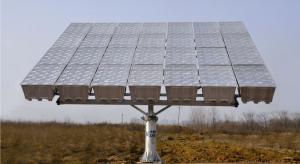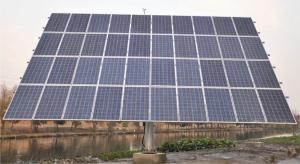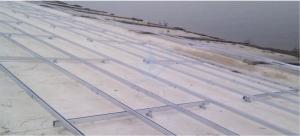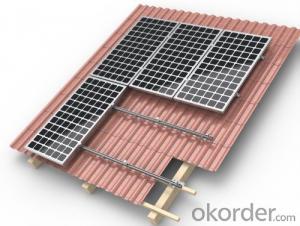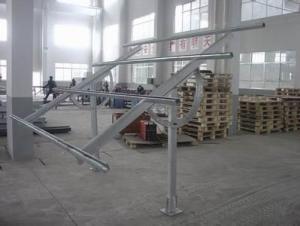Schletter Solar Mounting Systems - TT-TK-S03A Solar Panel Mounting System
- Loading Port:
- Shanghai
- Payment Terms:
- TT OR LC
- Min Order Qty:
- -
- Supply Capability:
- 50万套 set/month
OKorder Service Pledge
OKorder Financial Service
You Might Also Like
PV Mounting brackets are special solar photovoltaic systemfor placing, installing, fixing the solar panel design. Generally materials arealuminum, steel structure, stainless steel. PV mounting products at groundmounting system, flat roof mounting system, adjustable angle roof rack system,inclined roof rack system, column bracket system.
The Ground Mounting System including concret basement sysytemand steel pipe sysytem, Titanergy provides total solution for flat or pitchedroof with patent products.On the basis of the given project data, specificnational standards and guidelines, Titanergy will calculate the completestructural analysis and create a complete project plan to make sure reliablestructural safety.We provide high quality HDG steel and aluminum products forthe ground mounting sysytem,witch can make sure the security and durability ofthe project.
Features and Advantages
n The rail bracket is easy to install, just use simple tools(eg, Allen wrench) can be easily installed. Rail connecting member can freelyadjust the length, the stent may be pre-installed on the roof, and thenappropriately adjusted according to the size of the solar panel.
n The combination of strong, aluminum rails and card blocks fora variety of venues and a variety of materials roofs (such as metal, ceramicand other kinds of tile surface)
n Component compatibility, and rail can meet PV modules fromdifferent manufacturers.
n accuracy, the length of the rail to the nearest millimeter,the construction process, not because of the length is too long or too shortfor the second cut.
n flexible assembly, rail hooks can adjust the spacing modulearray and tile has been installed successfully address the uneven roofconstruction led to difficult problems.
n design standards, product design and development process instrict accordance with GB, the German standards and other internationalstandards to ensure products reach the world advanced level.
n Quality assurance, the stent main material is high-qualityaluminum and stainless steel, effectively prevent corrosion of oxidation.Products can be recycled, reducing environmental pollution.
n Carried out strictly according to the current specificnational standards
n Perfectly optimized components and complete structuralanalysis for the sysytem
n High corrosion resisitance ensure the stability and highdurability
n Total test and certification make sure the high quality ofthe products
n Maximum pre-assembled in factory,quick mounting onsite,timesaving
10-year durability warranty
Technical Data
n Design Period:25 years
n Installation Site: Open area
n Array Angle:10°~60°
n ModuleType:Framed or unframed
n Material:Q235B,Al 6063-T5,Al 6005-T5,StainlessSteel A2-70
n Coating:HDG/Anodised



- Q: How does a solar mounting system affect the roof's waterproofing?
- A solar mounting system can affect the roof's waterproofing by penetrating the surface with bolts or brackets used to secure the panels in place. These penetrations can potentially create areas where water can seep through and compromise the roof's integrity. However, when installed correctly with proper waterproofing measures, such as flashing and sealants, the impact on waterproofing can be mitigated, ensuring the roof remains watertight.
- Q: Can a solar mounting system be installed on a thatched roof?
- Yes, a solar mounting system can be installed on a thatched roof. However, it requires careful planning and installation to ensure that the roof's integrity is not compromised and that the solar panels are securely attached. Additionally, regular maintenance and inspections are necessary to ensure the thatch remains in good condition and does not obstruct the functioning of the solar panels.
- Q: Can a solar mounting system be installed on a boat or yacht?
- Yes, a solar mounting system can be installed on a boat or yacht.
- Q: Can a solar mounting system be used on flat roofs?
- Yes, a solar mounting system can be used on flat roofs. However, proper engineering and design considerations need to be taken into account to ensure the system is securely installed and optimized for maximum solar energy production.
- Q: Can a solar mounting system be used in areas with solar incentives for hospitals?
- Yes, a solar mounting system can be used in areas with solar incentives for hospitals. Solar mounting systems are flexible and can be adapted to various locations, including hospitals. By utilizing solar energy, hospitals can take advantage of the incentives provided by the government or local authorities, helping them reduce their energy costs and promote sustainability.
- Q: Can solar mounting systems be installed in areas prone to earthquakes?
- Yes, solar mounting systems can be installed in areas prone to earthquakes. However, special considerations and reinforcements need to be taken into account during the installation process to ensure the system's stability and durability in the event of seismic activity. Proper engineering and design techniques can help mitigate the risks associated with earthquakes and ensure the safe and reliable operation of solar mounting systems in such areas.
- Q: Can a solar mounting system be used in areas with solar incentives for breweries?
- Yes, a solar mounting system can definitely be used in areas with solar incentives for breweries. These mounting systems provide the necessary infrastructure for installing solar panels on rooftops or open grounds, allowing breweries to take advantage of the incentives offered for adopting solar energy. By utilizing a solar mounting system, breweries can not only generate clean and renewable energy but also potentially reduce their energy costs and contribute to a more sustainable future.
- Q: Can solar mounting systems be installed on buildings with limited foundation options?
- Yes, solar mounting systems can be installed on buildings with limited foundation options. There are various types of solar mounting systems available, such as ballasted, roof-mounted, and pole-mounted systems, which can be adapted to different foundation options. For buildings with limited foundation options, alternative methods like ballast blocks or specialized roof attachments can be used to secure the solar panels. It is crucial to consult with professionals in the field to determine the most suitable solar mounting system for a specific building's foundation limitations.
- Q: Can a solar mounting system be installed on a rooftop with a rubber roof?
- Yes, a solar mounting system can be installed on a rooftop with a rubber roof. It is important to use the appropriate mounting hardware and ensure proper sealing to prevent any damage to the rubber roof. Professional installation is recommended to ensure safety and effectiveness.
- Q: Can a solar mounting system be used with a battery storage system?
- Yes, a solar mounting system can be used with a battery storage system. The solar mounting system is responsible for securing and positioning the solar panels, while the battery storage system stores excess energy generated by the panels for later use. By combining both systems, solar energy can be captured and stored efficiently, providing a continuous and reliable power supply.
Send your message to us
Schletter Solar Mounting Systems - TT-TK-S03A Solar Panel Mounting System
- Loading Port:
- Shanghai
- Payment Terms:
- TT OR LC
- Min Order Qty:
- -
- Supply Capability:
- 50万套 set/month
OKorder Service Pledge
OKorder Financial Service
Similar products
Hot products
Hot Searches
Related keywords






